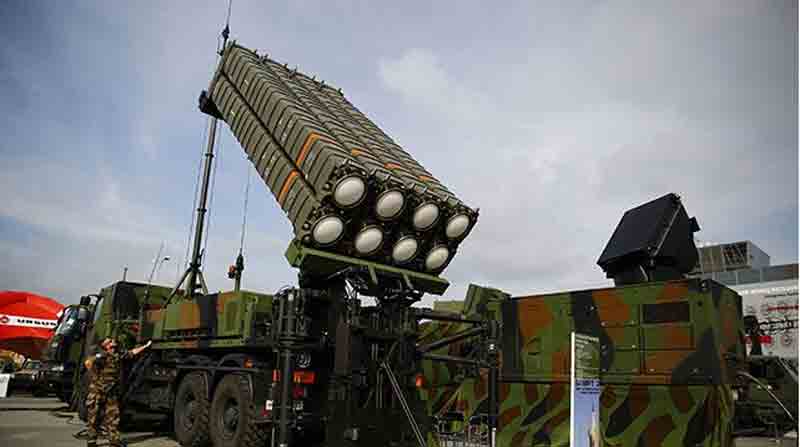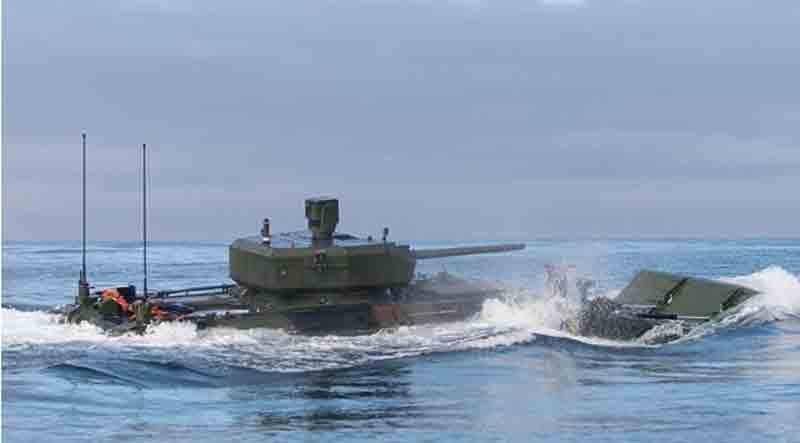On March 14, 2025, the Italian newspaper Corriere della Sera reported that the two SAMP/T air defense systems provided to Ukraine by Italy and France are nearly depleted of missiles. This situation has raised alarms regarding Ukraine’s capacity to protect its airspace amid ongoing Russian aerial assaults.
The article notes that Italy’s missile reserves have reached a critical level, with the remaining stock allocated for the defense of vital national assets. In contrast, France reportedly has a somewhat larger inventory, although it too is struggling to fulfill Ukraine’s urgent demands for additional munitions.
As the conflict in Ukraine enters its third year, this shortage highlights the broader logistical and production challenges faced by Western allies in their support of Kyiv against Russian aggression.
The Corriere della Sera article mentions that Ukraine has requested at least 50 more Aster-30 missiles, which are essential for the operation of the SAMP/T systems. These systems were supplied to enhance Ukraine’s defenses against an increase in Russian drones, cruise missiles, and ballistic threats in recent months.
Italy has already delivered two of its five SAMP/T batteries, leaving it with only three to protect its own territory, thereby reducing its reserves to a critical level. While French officials have not publicly disclosed their remaining stock, sources indicate that they maintain a modest surplus compared to Italy.
This situation has ignited discussions in both nations regarding the need to balance national security priorities with their obligations to support Ukraine, particularly as Russian forces persist in targeting Ukrainian cities and infrastructure.
Compounding the situation, a recent report from The Wall Street Journal has raised concerns regarding the performance of the SAMP/T systems in Ukraine. The American publication, referencing unnamed sources familiar with the deployment of these systems, characterized their effectiveness as underwhelming when compared to the U.S.-manufactured Patriot air defense systems also utilized by Ukrainian forces.
The Journal reported that the SAMP/T systems, which consist of six launch platforms each, have encountered difficulties in detecting and intercepting Russian missiles, especially during extensive, multi-target assaults. The report indicates that software issues may have hindered the systems’ capability to track incoming threats, leading to frustration among Ukrainian operators.
In contrast, the Patriot systems have received significant acclaim from Ukrainian officials for their success in intercepting advanced Russian munitions, including the Kinzhal hypersonic missile.
The assertions made by The Wall Street Journal have sparked debate among defense analysts and policymakers. While the Patriot system boasts a longer operational history and a strong supply chain supported by the United States, the SAMP/T was anticipated to serve as a viable European alternative.
Typically, each SAMP/T battery comprises a radar unit, a command module, and six launchers, which can fire Aster-30 missiles designed to intercept aircraft, drones, and ballistic missiles at distances of up to 120 kilometers. However, sources cited by the Journal suggest that the system’s performance in Ukraine has not met expectations, particularly in light of Russia’s evolving military strategies.
According to data from the Ukrainian military, air defenses have endured an onslaught of over 1,000 missiles and drones in the past six months, a volume that may have revealed vulnerabilities in the SAMP/T’s design or its integration into the defense framework.
On March 14, coinciding with the publication of the Corriere della Sera article, Ukraine’s Defense Minister Rustem Umerov held discussions with his Italian counterpart, Guido Crosetto, in Rome to address urgent matters. The meeting took place at the Italian Ministry of Defense and centered on securing additional military assistance for Ukraine in 2025, particularly focusing on enhancing air defense capabilities.
Umerov expressed appreciation for the SAMP/T systems that have already been provided, highlighting their importance in safeguarding Ukrainian airspace. However, he emphasized the critical need for more missiles to ensure their continued effectiveness. Crosetto reiterated Italy’s dedication to supporting Ukraine, while also recognizing the challenges faced by Italy’s own defense resources.
The ministers also considered potential collaborative industrial initiatives with Italian defense companies, including Leonardo, which partners with the French firm Thales to produce the SAMP/T through the Eurosam consortium. Although no definitive agreements on missile supplies were reached, the discussions highlighted the increasing pressure on European allies to enhance their support as U.S. aid encounters political challenges.
The SAMP/T, or Surface-to-Air Missile Platform/Terrain, is an advanced air defense system developed collaboratively by France and Italy. Launched in the early 2000s, it is engineered to address a diverse array of aerial threats, ranging from low-flying aircraft to short-range ballistic missiles.
The Aster-30 missile serves as the fundamental element of the system, available in two primary versions: the Aster-30 Block 1, designed for engaging aerodynamic targets such as aircraft and cruise missiles, and the Aster-30 Block 1NT, an enhanced variant that can accurately target ballistic missiles.
Both missile types are equipped with an active radar seeker and a hit-to-kill warhead, enabling them to eliminate targets through direct impact rather than relying on explosive fragmentation. The SAMP/T system utilizes the Arabel radar, which offers comprehensive 360-degree coverage and the capability to track multiple targets at once, relaying information to the launchers that can each carry eight missiles.
In its typical setup, a SAMP/T battery includes one Arabel multifunction radar, a command-and-control unit, and six truck-mounted vertical launchers. The system’s high mobility allows for rapid deployment in response to threats, and it can function autonomously or as part of a coordinated defense network.
The Aster-30 Block 1 has an operational range of approximately 120 kilometers against aircraft and 20-30 kilometers against ballistic missiles, depending on the speed and trajectory of the target. The Block 1NT variant enhances this capability with upgrades to its seeker and software, designed to address more sophisticated threats.
Eurosam, the manufacturer, promotes the SAMP/T as a cost-efficient alternative to the Patriot system, with each battery estimated to cost around $500 million, while individual missiles are priced at approximately $2 million each. In Ukraine, these systems have been deployed to protect vital urban areas and infrastructure, a role that has tested their effectiveness amid ongoing Russian attacks.
The deployment of the SAMP/T system in Ukraine represented its inaugural combat experience, in contrast to the Patriot system, which has been utilized in various conflicts from the Gulf War to recent operations in the Middle East. This absence of proven battlefield reliability may help explain some of the difficulties highlighted by The Wall Street Journal.
Defense experts point out that the Aster missiles used by the SAMP/T follow a “shoot-see-shoot” strategy, where one missile is fired at a target and the outcome is evaluated before launching another. This approach is designed to conserve ammunition.
In comparison, the Patriot system typically employs a “shoot-shoot-see” method, firing two missiles to ensure a successful hit. While this tactic consumes more munitions, it may prove more effective in chaotic, high-intensity scenarios.
Although Ukrainian officials have not publicly validated the Journal’s assertions, their ongoing requests for additional Patriot batteries—coupled with the shortages of SAMP/T systems—indicate a preference for the American system in critical regions such as Kyiv.
Italy has made a notable contribution to Ukraine’s defense, but its support is limited by its own requirements. With only five SAMP/T batteries available before the conflict, the donation of two units was a significant commitment. The Italian military depends on these systems to safeguard strategic locations, including Rome and essential NATO facilities, leaving little capacity for further transfers without jeopardizing national security.
France, which operates around a dozen SAMP/T batteries, has greater flexibility, although it too must consider its NATO commitments and domestic defense needs. Both nations have indicated intentions to boost Aster missile production, but increasing manufacturing capacity is a gradual process, hindered by supply chain issues and the high costs associated with advanced components.
Eurosam has announced plans for upgrades to the SAMP/T, including the upcoming SAMP/T NG variant, which will feature improved radar and missile capabilities; however, these enhancements are still years away from being operational.
The current missile shortage and concerns regarding performance arise at a critical juncture for Ukraine. According to estimates from the Ukrainian military, Russian forces have intensified their aerial operations, deploying an average of 100 drones and missiles weekly in early 2025. This relentless assault has put significant pressure on Ukraine’s air defense systems, which comprise both Soviet-era S-300 units and Western-supplied NASAMS and IRIS-T batteries.
The reduction of SAMP/T munitions may create vulnerabilities, especially against ballistic threats that have been aimed at energy infrastructure and civilian locations. Ukrainian President Volodymyr Zelensky has consistently called on allies to enhance their support with additional air defense systems and munitions, cautioning that any delays could allow Russia to gain aerial superiority by spring.
As of March 15, 2025, the situation continues to evolve. Italy and France face mounting pressure to address Ukraine’s requests, but their capacity to respond is influenced by domestic priorities and industrial capabilities. The recent meeting in Rome between Umerov and Crosetto did not yield immediate solutions, although it did pave the way for potential future collaboration.
Additionally, the challenges faced by the SAMP/T, as highlighted by The Wall Street Journal, have sparked a wider discussion about Europe’s dependence on American systems like the Patriot and the difficulties of maintaining high-tech military support in a drawn-out conflict. For the time being, Ukraine’s defenders must navigate the reality of limited resources, a situation that could significantly impact the course of the war in the coming months.
Discover more from Defence Talks | Defense News Hub, Military Updates, Security Insights
Subscribe to get the latest posts sent to your email.





